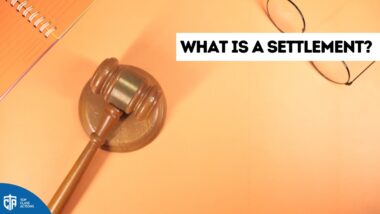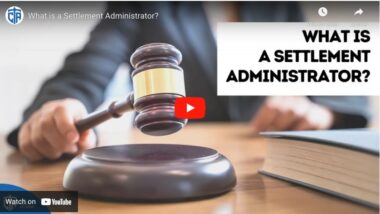Top Class Actions’s website and social media posts use affiliate links. If you make a purchase using such links, we may receive a commission, but it will not result in any additional charges to you. Please review our Affiliate Link Disclosure for more information.
It is difficult to say if there is one particular phase of a class action lawsuit that takes the longest in every case, but there are several points in the litigation that can lead to delays depending on the details of the case.
What Is a Class Action Lawsuit and What Are Its Parts?
Class action lawsuits are a way a small group or even a single consumer can file a lawsuit over injuries to a greater number of people. Class action lawsuits are an important tool for consumer protection – they help consumers hold companies accountable for damages that may seem small to an individual consumer, but add up when the same injury is suffered by a large number of consumers.
In a class action lawsuit, the lead plaintiff or plaintiffs propose to represent all others who they allege were similarly injured by the defendant’s conduct, also known as the “Class.” Ultimately, class action lawsuits are seeking to obtain redress on behalf of the Class, be it through a verdict at trial or settlement negotiation.
The phases of a class action lawsuit generally include the following;
- An individual or small group of consumers file the complaint against the defendant or defendants.
- The defendant(s) file a response. The response is required within a certain time frame.
- The parties may file motions after the class action lawsuit is initiated. These may include a motion for summary judgment or motion to dismiss.
- The court will consider whether to “certify” the plaintiff’s proposed Class, called “Class certification”.
- Depending on whether the Class is certified by the court, the class action lawsuit will move along with litigation. Litigation includes discovery of the evidence and additional motions filed by the parties.
- The proceedings will also likely include settlement negotiations prior to trial and, if the settlement negotiations are successful, the litigation may end before the trial is held.
- If the class action lawsuit proceeds to trial, then either the court or a jury will issue a verdict.
- After the verdict is issued, the plaintiff(s) or defendant(s) may appeal. Appeals may also be filed after a decision is issued by the court on any motion.
What Is Discovery and How Long Can It Take?
The discovery phase of a class action lawsuit can often be delayed, making this a potentially long part of the litigation.
Discovery, in lawsuits, is when the plaintiffs and defendants exchange information about the evidence they have to support their position at trial. To do so, witnesses are interviewed, also called a deposition, and other evidence, such as records or other documents, are demanded by the parties.
In order to exchange this information or request a deposition, the parties file with the court. While discovery demands generally have a deadline, the parties can also file objections to these demands. These discovery disputes are what can draw out the discovery process.
 How Long Can It Take to Get Approval of the Settlement?
How Long Can It Take to Get Approval of the Settlement?
Settlement negotiations are usually kicked off when the proposed Class is certified, and negotiations usually take less than a year – not much time in the legal world. However, approval of the settlement proposed by the parties can run into some roadblocks, potentially delaying the payout of Class Members’ claims.
Settlement agreements need to include the amount that will be awarded to the Class, the plaintiffs, and attorney fees, as well as a description of how notice will be provided to Class Members, and a release of liability for the defendants.
Approval of the settlement usually involves the following steps;
- The parties file the proposed settlement with the court along with a motion for preliminary approval.
- The court determines whether to preliminarily approve the settlement agreement. The court may reject the agreement if it determines that it would not likely be granted final approval or the Class would not be certified.
- If the settlement agreement is granted preliminary approval, then notice will be provided to Class Members according to the settlement agreement.
- A deadline will be set for final approval of the settlement. During that time, Class Members will have the opportunity to object to or exclude themselves from the settlement agreement.
- After the court has considered any objections filed, it will either approve or reject the settlement agreement at the final approval hearing.
- After the court has accepted the proposed settlement, generally, settlement awards, such as class action settlement checks will be sent to Class Members. However, in addition to appealing the rejection of a settlement agreement, the parties or an objector could appeal the approval of the agreement.
The settlement agreement approval process can be plagued with delays. While the parties must agree to bring a motion for preliminary approval, Class Members could file objections to the settlement that must be addressed before final approval can be issued. Additionally, problems with notice to Class Members can also lead to delays.
Finally, the judge hearing the class action lawsuit can also reject the settlement agreement. The court must find that the settlement agreement meets several requirements;
- The plaintiff(s), or class representatives, appropriately represent the Class.
- The settlement agreement was negotiated fairly, and that neither side had a gross advantage or disadvantage in the bargaining.
- The terms of the settlement agreement are appropriate, considering the costs and delays of trial, the relief offered to the class, and the attorneys’ fees.
- The settlement agreement treats the Class Members equally.
If the court determines that the settlement agreement fails to meet any of these requirements, then it will reject it and the parties will have to go back to the drawing board to address the issues identified by the judge.
How Long Can the Appeals Process Take?
Whenever a party or a Class objector appeals a decision in a class action lawsuit, additional time is added to the ultimate resolution of the case. When a party disagrees with a decision made by a court, they have the option to ask another “higher” court to look at and potentially reverse the decision in an appeal.
Though most appeals are final decisions, depending on the level of the court in the original decision, an appeal can take place in several courts.
While appeals can take place whenever a court issues a decision, appeals in class action lawsuits generally take place at certain junctures in the proceedings, including if a motion to dismiss or for summary judgment is granted, at Class certification, or after a verdict is issued in a trial.


 How Long Can It Take to Get Approval of the Settlement?
How Long Can It Take to Get Approval of the Settlement?












